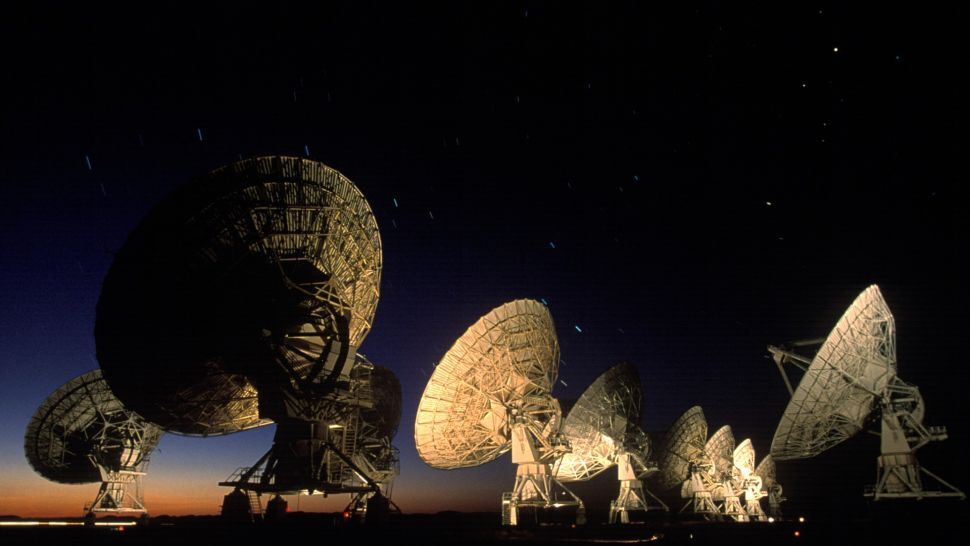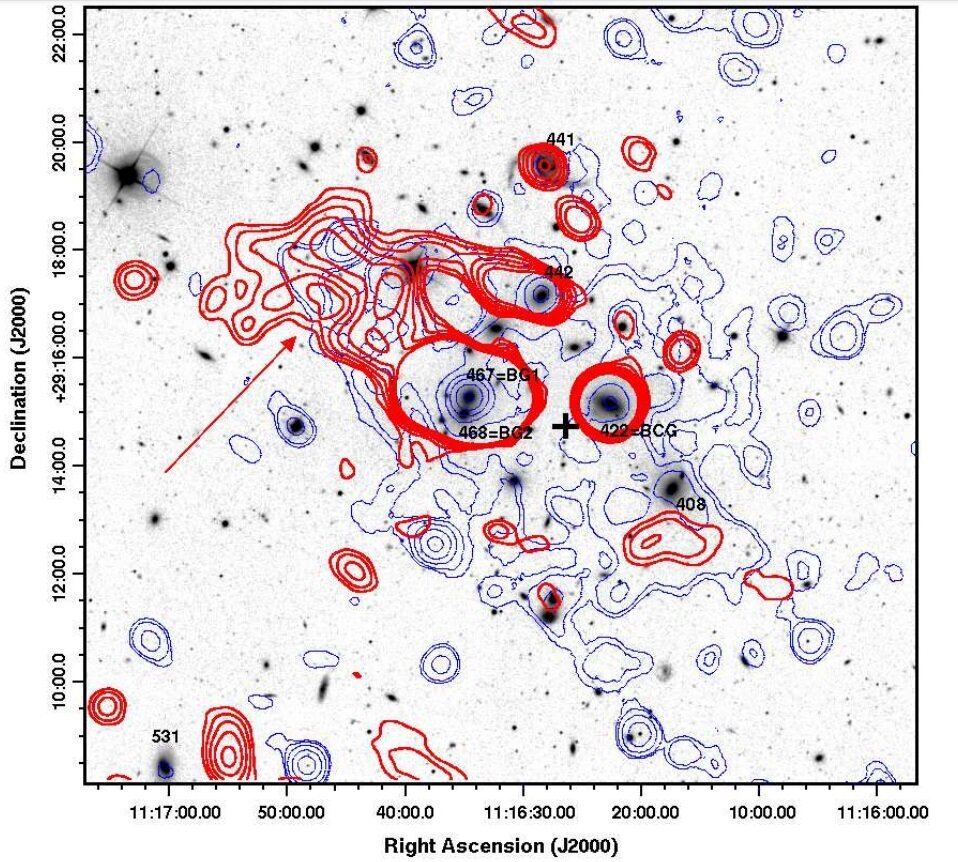23.03.2023
The radio halo coming from Abell 1213 is somewhat of a puzzle to astronomers.

These twenty-seven moveable antennas, known as the Very Large Array (VLA), take in radio signals, some extremely faint, from throughout the cosmos, 1999 near Socorro, New Mexico. (Image credit: Joe McNally/Getty Images)
A puzzling radio emission from a galactic cluster located in the constellation may come from the 1.66 million light-year-long radio tail of its dominating central galaxy.
The team that made this discovery also found evidence of mergers between galaxies in the cluster Abell 1213, which is in the constellation of Ursa Major and is located around 647 million light-years from Earth. The findings are the result of astronomers investigating an anomalous radio emission from Abell 1213. In 2009, observations with the Very Large Array (VLA), comprised of 28 radio antennas spread across the Plains of New Mexico, revealed the presence of a diffuse extended emission from the cluster.
This was initially believed to be from a radio halo, a large-scale source of diffuse (spread out) radio emissions found at the heart of a select few galactic clustersthat are created when electrons moving in a circle are accelerated to near-light speeds and begin to emit a type of radiation called "synchrotron radiation." Yet this radio emission has some qualities that set it apart from other radio haloes, such as the fact it is off-center in relation to the gas and dust between galaxies in the cluster called the "intracluster medium," making it something of a puzzle to astronomers.
The team of astronomers led by Walter Boschin of the University of La Laguna, Spain, used a massive data set from both space and ground-based telescopes to study the dynamics of Abell 1213. This included optical data from the Sloan Digital Sky Survey (SDSS) and X-ray data from the XMM-Newton space telescope which revealed the structure and dynamics of the cluster's intracluster medium.

SDSS g-band image of the galaxy cluster Abell 1213 with, superimposed, the contour levels of the VLA 1.4 GHz radio image. (Image credit: Boschin et al, 2023)
Comparing this to data collected recently by the Low-Frequency Array (LOFAR), currently the world's largest radio telescope, the scientists could see that radio emission has a size of about 1.66 million light-years and that it doesn't follow X-ray emissions from this region.
This indicates that instead of being a radio halo, the source of this emission is actually the tail of 4C29.41, a radio galaxy at the heart of the cluster that dominates the cluster alongside two other radio galaxies. The team proposes that this tail has been curved by interaction with Abell 1213's intracluster medium, the superheated plasma spread throughout the cluster between galaxies.
The team also detected traces of fragments of diffuse radio emissions at the heart of Abell 1213. The astronomers suggest that this radio emission in this galactic cluster may be a radio relic, the result of a past galactic merger causing a shockwave that accelerates the electrons making it almost a "radio fossil" of the region's history.
"The spectral index map of the radio source is compatible with a relic interpretation, possibly due to a merger in the N-S or NE-SW direction, in agreement with the substructures detected through the optical analysis," the astronomers write. "The fragmented, diffuse radio emissions at the cluster center could be the surface brightness peaks of a faint central radio halo."
In addition to these radio revelations, the astronomers discovered other fascinating information about Abell 1213. The fact that the cluster's most luminous galaxy near its center, its so-called brightest cluster galaxy (BCG), has a large velocity indicates Abell 1213 is actually composed of several groups of galaxies and that its core has an intricate substructure.
The team also found that star-forming galaxies, notable for the bright blue coloration that comes from hot young stars, are not restricted to the edges of Abell 1213. This may imply that the cluster formed when several separate groups of galaxies merged together.
The team writes that deeper X-ray observations of this cluster will be needed before the origin for the fragmented radio emissions from the heart of Abell 1213 can be confirmed. Astronomers will also continue to also investigate the galactic cluster's other features.
The team's research is published on the paper repository arXiv(opens in new tab).
Quelle: SC
